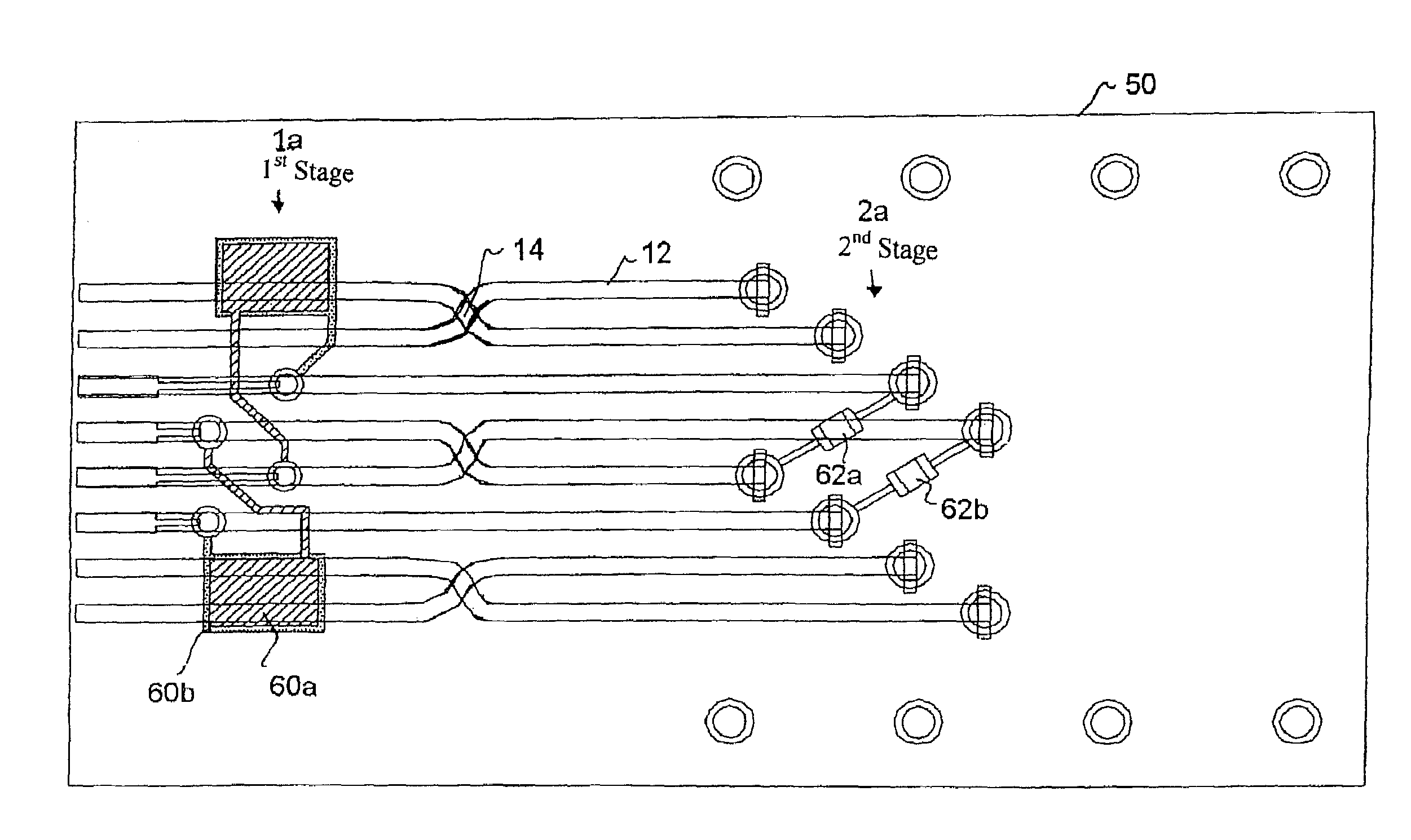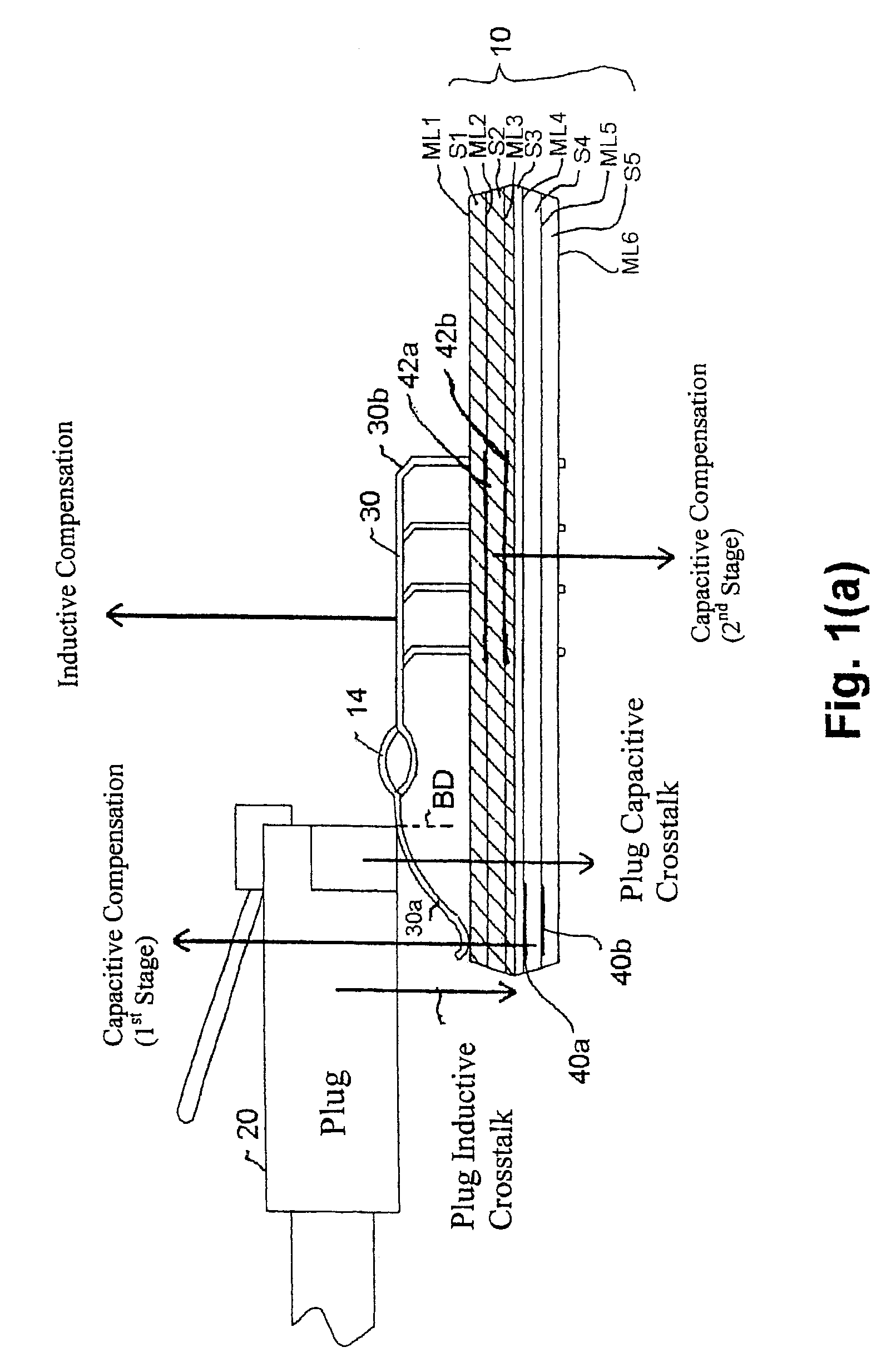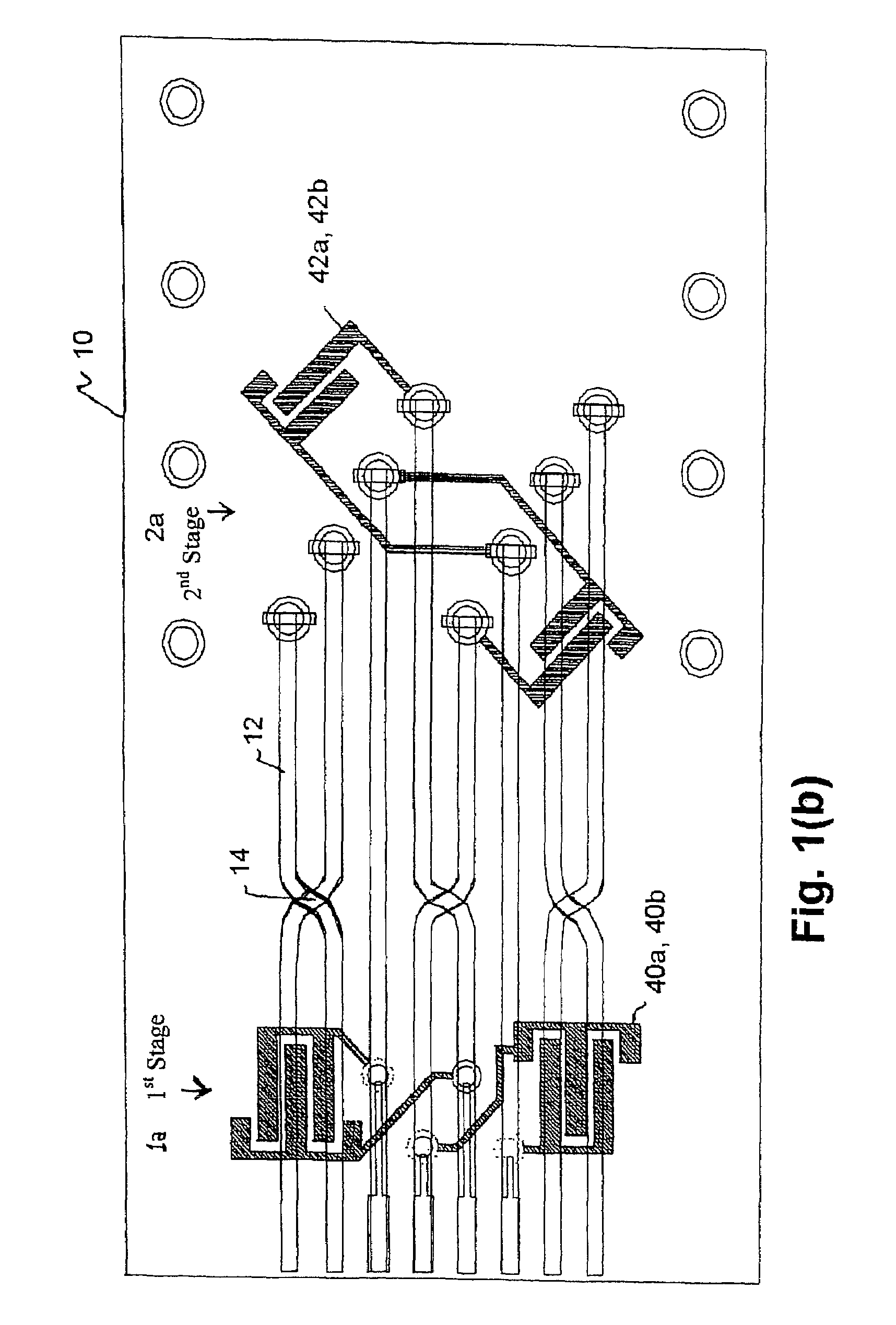NEXT high frequency improvement using hybrid substrates of two materials with different dielectric constant frequency slopes
a dielectric constant frequency slope and hybrid substrate technology, applied in cross-talk/noise/interference reduction, coupling device connection, printed capacitor incorporation, etc., can solve the problem of deteriorating limit lines, high frequency margin further deterioration, common problem of crosstalk, etc. problem, to achieve the effect of reducing the next in the connector, and improving the next high frequency performan
- Summary
- Abstract
- Description
- Claims
- Application Information
AI Technical Summary
Benefits of technology
Problems solved by technology
Method used
Image
Examples
first embodiment
[0023]FIG. 1(a) is a side view of a connector and FIG. 1(b) is a top plan view of the printed circuit board and compensation capacitors of FIG. 1(a), all according to the present invention.
[0024]Referring to FIGS. 1(a) and 1(b), the connector includes contacts 30 having crossovers 14, and a hybrid PCB 10, where a plug 20 is to mate with the connector. The plug 20 can be a modular plug such as one used at the end of a phone line or a patch cord used to connect a personal computer to a wall outlet. The contacts 30 can be soldered or press-fitted into plated-through holes located at the appropriate portions of the PCB 10 and can be spring wire contacts. Moreover, the contacts 30 have a current carrying portion 30b and a non-current carrying portion 30a, where a boundary BD between these portions 30a and 30b are indicated in FIG. 1(a). The contacts 30 and the PCB 10 can be housed in a housing such as a modular jack, so that when the plug 20 enters the jack, the electrical contacts on th...
third embodiment
[0036]Particularly, referring to FIG. 3(a), the PCB 50 is composed of four substrates S1-S4 and five metalized layers ML1-ML5, which are alternatingly stacked up. All the four substrates S1-S4 are made of a high DK material. The contacts 30 on the first metalized layer ML1 are not shown in FIG. 3(a), but are shown in FIG. 3(b) as the wire pairs 12 having the crossovers 14.
[0037]Referring to FIG. 3(b), at the first stage, parallel plate capacitors 60a and 60b are respectively formed on or as part of the second and third metalized layers ML2 and ML3, where the two plates 60a and 60b of each capacitor parallel each other. At the second stage, surface mount capacitors 62a and 62b are mounted on the first metalized layer ML1 (or under the last metalized layer).
[0038]In this embodiment, the magnitude of the first stage capacitive coupling declines with frequency because the first stage parallel plate capacitors 60a and 60b reside in the PCB 50, which has a high DK slope. The second stage...
fourth embodiment
[0039]FIG. 4(a) is a side view of printed circuit boards of a connector and FIG. 4(b) is a top plan view of the printed circuit boards and compensation capacitors of FIG. 4(a), all according to the present invention.
[0040]The fourth embodiment is similar to the first embodiment in that the connector includes the contacts 30 and receives a plug such as the plug 20. However, instead of using one hybrid PCB 10 made of high and low DK materials as in the first embodiment, in the fourth embodiment two homogenous PCBs are provided in the connector, where all the substrates of the first PCB are made of a high slope DK material and all the substrates of the second PCB are made of a low slope DK material.
[0041]Particularly, referring to FIG. 4(a), in the fourth embodiment, the first PCB 70 is composed of four substrates S1-S4 and five metalized layers ML1-ML5, which are alternatingly stacked up. All the four substrates S1-S4 in the first PCB 70 are made of a high slope DK material. The secon...
PUM
 Login to View More
Login to View More Abstract
Description
Claims
Application Information
 Login to View More
Login to View More - R&D
- Intellectual Property
- Life Sciences
- Materials
- Tech Scout
- Unparalleled Data Quality
- Higher Quality Content
- 60% Fewer Hallucinations
Browse by: Latest US Patents, China's latest patents, Technical Efficacy Thesaurus, Application Domain, Technology Topic, Popular Technical Reports.
© 2025 PatSnap. All rights reserved.Legal|Privacy policy|Modern Slavery Act Transparency Statement|Sitemap|About US| Contact US: help@patsnap.com



